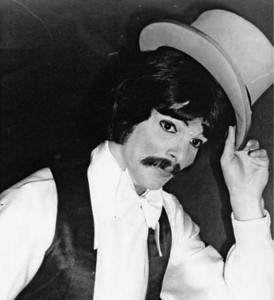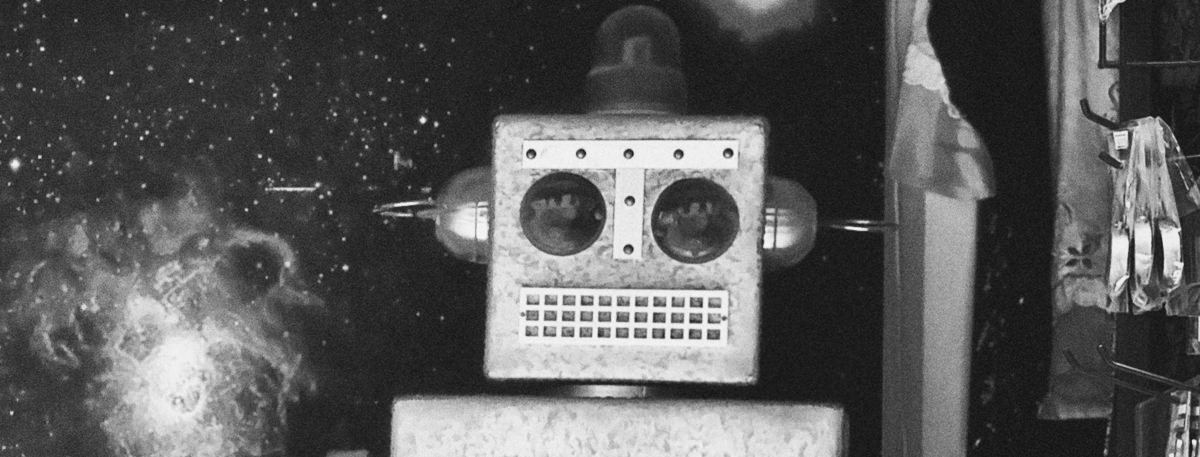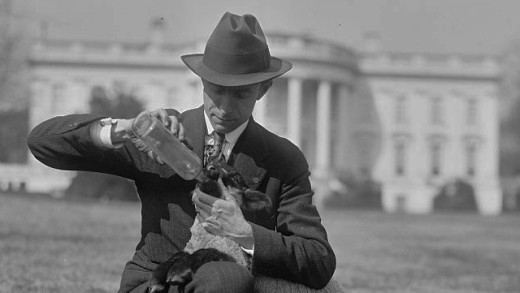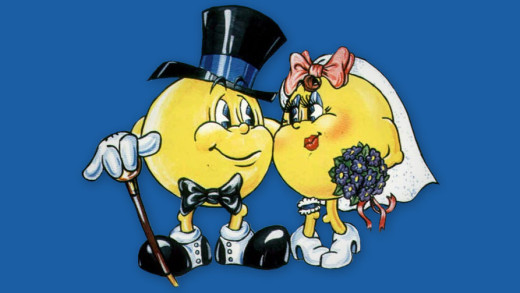Dancing machines: a brief history of the robot dance
But where did the robot come from? How did it become a phenomenon? And, most importantly, who invented the robot?
It turns out that the answer is the far from robotic simplicity. Instead, it’s all in metallic shades of grey.
The robot starts with mime
 Years before the robot became a dance set to music, it was a part of mime.
Years before the robot became a dance set to music, it was a part of mime.
As early as the 1920s, mimes imitated the movements of mannequins, robots, and other stilted figures in their routines. It was an obvious extension of mime classics, and including mechanical-seeming movements was a topical choice for the coming mechanical age. These mannequin routines were typically more limited than the robot—rather than continuous movement, they usually featured just enough to unsettle the viewer. It was a novelty, but not a national sensation, until one man saw a revivalist.
As recorded in Underground Dance Masters, a mime named Robert Shields was getting his career off the ground in Los Angeles at the Hollywood Wax Museum. He performed one of the old mannequin routines in the late 60s, and the robotic movement inspired a young man named Charles Washington to adapt the style to funk music.
Charles Washington would soon be known as Charles Robot Washington. But the entire L.A. dance scene helped make The Robot happen.
Locking starts a revolution, and the robot fits right in
Despite Charles Robot Washington’s name, it would be incorrect to give him sole credit for inventing the dance (though he was, without doubt, a furiously talented dancer). Instead, credit for the dance should go to the entire locking scene in late 60s L.A.
A man named Don Campbell was at the center of the revolution, and he’s widely credited as the inventor of locking, the jerky style at the center of the robot. While it’s tough to be certain locking can be isolated to one person, Campbell was at the core of an L.A. scene and was important enough that locking was initially called Campbellocking.
He and other dancers developed locking at clubs like Mavericks Flat, where their invention worked perfectly with the new funk music. There, Campbell met Charles Washington and other notable dancers like Damita Jo Freeman, Bill Slim Robot Williams (who even worked as a mannequin), Fred Berry, and many other talented artists who riffed on the locking theme. The locking scene in Los Angeles shows that while there may be a case for a sole inventor of the robot, it’s more accurate to say that the dance emerged from a dance scene spearheaded by the L.A. lockers. Charles Washington may be the inventor, but he had a lot of research to inspire him.
That simultaneous invention prompts another question: why single out the L.A. scene over other cities where locking might have occurred? Why should the L.A. scene get credit when dancers in New York or Chicago were probably developing their own locking style?
The answer is Soul Train.
Soul Train gives locking—and the robot—a national platform
Soul Train started as a local Chicago show, but when Don Cornelius wanted to go national, he had the national broadcast filmed in Los Angeles. That gave local dance crews a chance to bring their style to a national platform watched by fans, artists, and other dancers.
Soul Train scouted local clubs for talent, and they found Don Campbell and Damita Jo Freeman. Once they shined, the rest of the crew appeared, mixing locking with extremely acrobatic dance, or splicing brief snippets of the robot amidst routines with James Brown. Campbell and his lockers, along with other dancers on Soul Train, brought locking to the nation.
That said, it’s difficult to determine when locking ends and The Robot begins. How do you decide if a dance is The Robot or a locking routine? What’s the distinction? Charles Washington and Angela Johnson, his partner, frequently used the terms roboting or robotics to describe their dances, but Soul Train didn’t provide a clear connection between locking and The Robot.
His name was Michael JacksonHowever, one fan of Washington, Campbell, and other lockers did have the clout to link locking and The Robot together forever. His name was Michael Jackson.
Michael Jackson programs a Dancing Machine
Michael Jackson was a Soul Train fan who watched the Lockers and other innovative dancers, so it was natural he’d incorporate it into his routine. He performed the robot first at a concert in March of 1973, and the dance debuted on national TV during a Bob Hope special. Yes, that’s right—Bob Hope is connected to Michael Jackson’s robot.
The song Dancing Machine was a hit, so the Jackson 5 performed the song on countless TV shows, from Soul Train to The Carol Burnett Show, and every time Michael and his brothers performed the robot during the break. Clearly, Michael and the Jackson 5 didn’t invent the move or even the robotics concept, but by performing the dance during Dancing Machine, they inextricably tied a style of locking to machinery and robots.
Who really invented the robot?
Thanks to the platform of Soul Train and the superstar promotion of the Jackson 5, the robot became a fixture of dance. Because it was easily imitated by amateurs, yet still stunning in the hands of professionals, the dance had longevity.
So who really invented the dance? The rhythm of funk music makes it safe to call the modern robot a late 60s phenomenon, but things get less clear after that. An argument can be made that Bill Campbell pioneered locking, so he should get credit, but Charles Robot Washington was famous for tying the dance to robotics. Still, without Soul Train or Michael Jackson, the use of locking in a dance called The Robot might have remained obscure. It turns out that the robot’s movement is a lot more defined than its origins.
That said, one thing is as clear as binary code: the robot will keep going, and it will keep getting better.





